Bolon Tree
- November 7, 2024
- 0 comment
The Bolon Tree, scientifically known as Platymitra arborea, is an essential tree species with profound ecological importance. Known for its ability to adapt to diverse climates and contribute significantly to the ecosystem, this tree is valuable for soil health, biodiversity, and the overall environment.

As a unique member of the family Annonaceae, the Bolon Tree plays a vital role in stabilizing soils, providing habitats for wildlife, and supporting local biodiversity. Its role extends beyond its immediate surroundings, making it a key species for environmental health and conservation efforts in various regions.
What Is a Bolon Tree?
The Bolon Tree, or Platymitra arborea, is a tropical to subtropical tree species from the Annonaceae family. This tree has adapted to thrive in different environments, showing considerable resilience and ecological contributions. Characterized by its large, glossy leaves, smooth bark, and fragrant flowers, the Bolon Tree is notable for its attractive foliage and ecological benefits.
Key Characteristics of the Bolon Tree:
- Leaves: The Bolon Tree has broad, vibrant green leaves that contribute to its lush appearance and help in shading the forest floor, reducing soil erosion.
- Flowers: Its flowers are small but fragrant, often attracting pollinators such as bees and butterflies. The flowers play a role in supporting the local pollination network.
- Bark: The tree’s bark is typically smooth and grayish-brown, adding to its aesthetic appeal. The bark has also been used in some regions for medicinal purposes.
This tree is long-lived, with a lifespan that can range from several decades to over a hundred years under ideal conditions, making it a lasting part of the ecosystem in which it grows.
Different Types of Species Bolon Tree
While Platymitra arborea is the primary species commonly referred to as the Bolon Tree, there are related species within the same family that share similar traits and ecological roles. Some notable species within the Annonaceae family include:
Platymitra Macrophylla
Known for its large leaves, this species is adapted to high-rainfall areas.


Platymitra Angustifolia
Characterized by narrow leaves, this variant can survive in slightly drier climates.
Platymitra Tomentosa
This species has a hairy texture on its leaves and branches, which can help it retain moisture in drier regions.

These different species show adaptations in leaf size, bark texture, and overall shape, allowing them to thrive in their native environments. Together, they play a crucial role in enhancing biodiversity, supporting soil stability, and providing habitats for various creatures.
Where Do Bolon Trees Grow?
The Bolon Tree is native to tropical and subtropical regions, typically thriving in countries with warm, humid climates. Its natural habitats include rainforests, moist woodlands, and sometimes semi-arid regions, where it has adapted to different environmental conditions.
Geographical Distribution:
- Primary Regions: Southeast Asia, parts of Central and South America, and specific regions of Africa.
- Climate Adaptations: While primarily found in tropical and subtropical zones, the Bolon Tree shows surprising adaptability to semi-arid environments, where it can survive in dry seasons due to its deep-root system.
Ecologically, the Bolon Tree is vital in stabilizing soils, especially on slopes and near water bodies, where its root system prevents soil erosion. Additionally, it provides shelter and food sources for a variety of insects, birds, and mammals, making it an integral component of the ecosystems it inhabits.
How to Grow and Care for a Bolon Tree
For gardeners or conservationists interested in growing the Bolon Tree, it’s essential to understand its preferences and care needs to ensure healthy growth.

Planting and Growing Tips:
- Soil Requirements: Bolon Trees thrive in well-drained, loamy soils but are also tolerant of slightly sandy or clay-rich soils.
- Watering Needs: Although they require regular watering, Bolon Trees are somewhat drought-resistant. Watering should be reduced in the dormant season to avoid root rot.
- Sunlight: Full sun to partial shade is ideal, as this tree can adapt to different light conditions.
Propagation and Maintenance:
Propagation is typically done through seeds or cuttings. For successful germination, seeds should be soaked overnight and planted in a mix of compost and soil. Cuttings can be taken in spring or early summer to encourage rooting.
Routine pruning helps maintain the tree’s shape and promotes healthy foliage. Regular inspection for pests, such as beetles or aphids, will also support the tree’s growth.
Ecological Benefits of the Bolon Tree
The Bolon Tree is highly beneficial to the environment, offering multiple ecological services:

- Soil Improvement: Its leaf litter decomposes quickly, enriching the soil with nutrients.
- Erosion Control: The Bolon Tree’s deep roots help prevent soil erosion, especially on slopes or in riverine areas.
- Habitat Creation: Birds, insects, and small mammals rely on the Bolon Tree for food, nesting sites, and shelter.
These benefits make the Bolon Tree a valuable species for reforestation projects and biodiversity conservation.
Bolon Tree Flowering and Pollination
The Bolon Tree typically flowers in the spring, producing small, aromatic blooms that attract pollinators like bees, butterflies, and occasionally birds. The flowers have a delicate scent, and their white or light-colored petals help them stand out in forest settings. Pollination is crucial for the tree’s reproduction, as it enables the development of seeds that can germinate and establish new trees, thereby ensuring the continuation of its species.
Is the Bolon Tree Drought-Tolerant?
Yes, the Bolon Tree has moderate drought tolerance due to its deep roots, which allow it to access water from deeper soil layers. This characteristic makes it suitable for areas with limited water, although it still requires adequate hydration during its initial growth stages. In arid regions, mulching around the base of the tree can help retain soil moisture and support its growth during dry spells.
Bolon Tree and Wildlife Interactions
The Bolon Tree fosters a rich relationship with local wildlife. Birds use the tree’s branches as nesting spots, while its flowers attract a variety of pollinators. Additionally, its leaves provide sustenance for specific insect species, creating a balanced ecosystem where multiple organisms benefit from the tree’s presence.
Symbiotic relationships include pollinators that help fertilize the flowers, and in return, they gain food from the tree. In some areas, even small mammals have been observed to rely on the Bolon Tree for shelter, enhancing the tree’s importance within its habitat.
Conclusions
In conclusion, the Bolon Tree (Platymitra arborea) is a remarkable species that plays a multifaceted role in the ecosystem. From its soil-stabilizing roots to its role as a wildlife habitat, this tree is essential for environmental health. By supporting soil quality, preventing erosion, and contributing to biodiversity, the Bolon Tree exemplifies the importance of conserving native flora. As an ecological asset, the Bolon Tree underscores the need for conservation efforts that protect such species and the ecosystems they sustain.
Frequently Asked Questions (FAQs)
- What is the scientific name of the Bolon Tree?
The Bolon Tree’s scientific name is Platymitra arborea, and it belongs to the Annonaceae family. - Where does the Bolon Tree typically grow?
It grows in tropical and subtropical regions, particularly in Southeast Asia, Central and South America, and some parts of Africa. - What are the main features of the Bolon Tree?
The Bolon Tree has broad, glossy green leaves, fragrant flowers that attract pollinators, and smooth grayish-brown bark. - How does the Bolon Tree benefit its environment?
It improves soil health, controls erosion with its roots, and supports local biodiversity by providing food and shelter to wildlife. - Is the Bolon Tree drought-tolerant?
Yes, it has moderate drought tolerance due to its deep root system, which helps it access water in dry conditions. - What types of wildlife rely on the Bolon Tree?
Birds, insects, and small mammals use it for nesting, food, and shelter, while pollinators like bees benefit from its flowers. - Can the Bolon Tree be grown in home gardens?
Yes, it can be grown in home gardens with well-drained soil, regular watering, and sunlight. It is typically propagated from seeds or cuttings. - When does the Bolon Tree flower, and what do its flowers look like?
It flowers in the spring, with small, aromatic blooms that are usually white or light-colored and attract bees and butterflies for pollination.


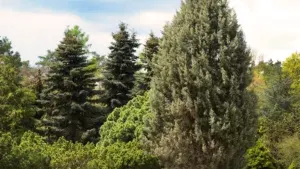
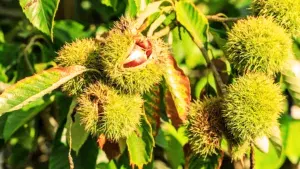
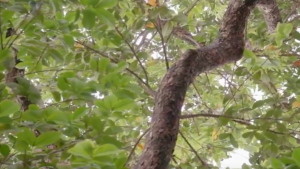
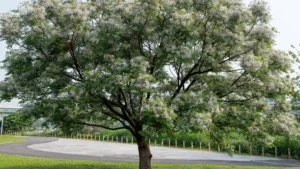

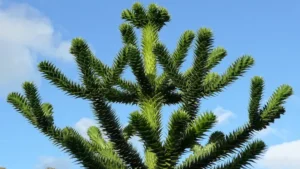
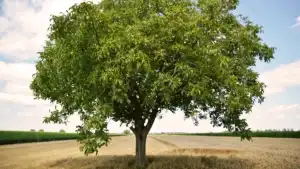

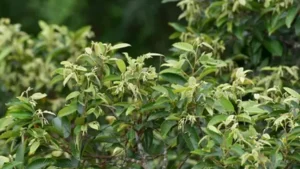
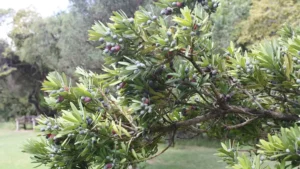
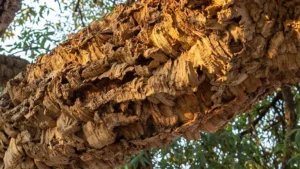

Leave your comment